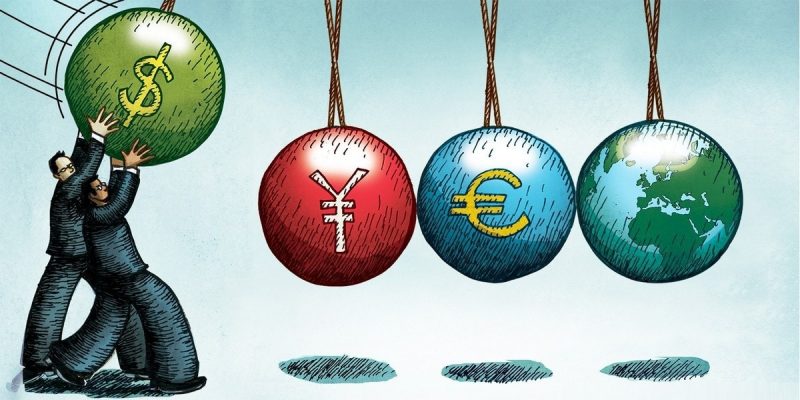Captive Market: Definition, Examples, and Business Strategies

A captive market is a consumer base that has limited choices or alternatives when purchasing a product or service. Businesses operating in a captive market control pricing, product availability, and consumer access, making it a powerful advantage for companies.
From airports and stadiums to exclusive service contracts, captive markets exist in various industries, allowing businesses to maximize profits and maintain market dominance.
In this guide, you’ll learn:
- What a captive market is & why it matters
Real-world examples of captive markets
Advantages & challenges of captive market businesses
Business strategies to succeed in a captive market
Let’s dive into the world of captive markets and how businesses can leverage them!
What is a Captive Market?
Definition of Captive Market
A captive market is a situation where consumers have no choice but to purchase from a specific supplier or limited group of providers due to geographical, legal, or contractual restrictions.
- Customers can’t easily switch brands or shop elsewhere.
Businesses set higher prices or control product availability.
Often seen in monopolies, exclusive contracts, and regulated industries.
Example: A movie theater banning outside food forces customers to buy expensive in-house snacks, creating a captive market for concessions.
Characteristics of a Captive Market
- Limited competition – One or few providers dominate the market.
High demand & dependency – Consumers must buy from available options.
Price control – Businesses can charge premium prices.
Regulations & barriers to entry – Legal or logistical reasons restrict competitors.
Captive markets often lead to high-profit margins for businesses but can also create ethical concerns regarding pricing and consumer rights.
Real-World Examples of Captive Markets
Captive markets exist in everyday life, from travel hubs to digital subscriptions.
Airports & Airline Services
- Travelers have limited food and shopping choices inside an airport.
Airlines charge high baggage fees since passengers have no alternatives.
Inflated food & drink prices due to lack of competition.
Example: A bottle of water that costs $1 outside an airport might cost $5 inside, as travelers have no alternative suppliers.
Movie Theaters & Entertainment Venues
- Movie theaters ban outside food and charge high prices for snacks & drinks.
Sports stadiums sell overpriced food, beverages, and merchandise.
Example: A large popcorn at a movie theater can cost 5x the price of supermarket popcorn.
Hospitals & Medical Services
- Patients in private hospitals often must use in-house pharmacy services.
Emergency care facilities charge premium prices since patients can’t shop around.
Example: A simple aspirin tablet in a hospital may cost $15, compared to $2 at a pharmacy.
Colleges & University Campuses
- Students often must buy textbooks from university bookstores.
Cafeterias & dining halls charge high prices since students lack food options.
Example: A required college textbook might cost $200 at a campus bookstore, while a used copy is $50 online.
Subscription-Based Digital Services
- Customers are locked into exclusive services with limited options.
Streaming services (Netflix, Disney+) have exclusive content not available elsewhere.
Cloud storage providers (Google Drive, iCloud) create dependency on their platforms.
Example: Apple users must buy iCloud storage if they exceed free limits since no other service integrates directly with Apple devices.
Advantages & Disadvantages of a Captive Market
- Advantages for Businesses
- Higher profit margins – Limited competition allows premium pricing.
Customer loyalty & retention – Consumers must continue using services.
Predictable revenue – Stable customer base ensures consistent income.
Brand dominance – Business becomes the go-to provider for consumers.
Disadvantages & Ethical Concerns
- High prices hurt consumers – Businesses may overcharge due to lack of competition.
Consumer frustration – Customers feel forced to buy from a single provider.
Regulatory risks – Government agencies may intervene & impose restrictions.
Innovation stagnation – Lack of competition reduces incentive for improvement.
Example: In 2015, Martin Shkreli’s company Turing Pharmaceuticals increased the price of Daraprim (a life-saving drug) from $13.50 to $750 per pill, exploiting a captive market in rare disease treatment.
Business Strategies for Success in a Captive Market
To maximize profits ethically and retain customer trust, businesses in captive markets must focus on value, innovation, and customer experience.
Provide High-Quality Products & Services
- Ensure customers feel they are getting value for their money.
Offer premium service to justify higher prices.
Example: Apple provides exclusive software, security, and device integration to keep customers locked into its ecosystem.
Offer Loyalty Programs & Discounts
- Give customers exclusive perks for long-term engagement.
Implement bundled pricing & membership benefits.
Example: Amazon Prime offers free shipping, video streaming, and discounts, creating a strong captive market.
Innovate & Improve Customer Experience
- Keep introducing new features & upgrades to justify premium pricing.
Provide exceptional customer service to increase satisfaction.
Example: Netflix continuously releases original content to keep subscribers engaged.
Maintain Ethical Pricing & Transparency
- Avoid overpricing that causes negative customer sentiment.
Clearly communicate why pricing is structured a certain way.
Example: Costco offers fair pricing & high-quality bulk goods, even though customers must pay a membership fee.
The Future of Captive Markets: Trends & Regulations
Governments and consumer protection agencies are increasingly monitoring captive markets to ensure fair pricing and ethical business practices.
Future Trends:
- More regulatory oversight – Governments may limit price gouging in essential services.
Increased competition in digital services – Emerging platforms challenge dominant players.
Subscription-based models expanding – More industries adopting membership-based pricing.
Example: The EU fined Google $2.7 billion for anti-competitive behavior in online shopping searches.
Conclusion
Captive markets offer high profitability and customer retention, but businesses must balance pricing and ethics to avoid customer backlash and regulatory issues.
Key Takeaways:
- Captive markets limit consumer choices, allowing businesses to charge premium prices.
Examples include airports, hospitals, universities, and digital subscriptions.
Successful captive market businesses focus on quality, loyalty programs, and innovation.
Regulations are increasing to prevent price exploitation in captive industries.
Is your business in a captive market? Focus on delivering real value to customers to build long-term success!
FAQs
1. What is a captive market?
A captive market is where consumers have limited choices, forcing them to buy from a specific supplier.
2. What are examples of captive markets?
Airports, hospitals, universities, stadiums, and digital subscription services.
3. How do businesses benefit from captive markets?
They control pricing, retain customers, and generate high profits due to lack of competition.
4. Are captive markets ethical?
They can be profitable but controversial if businesses overcharge or exploit customers.
5. Can regulations limit captive market pricing?
Yes! Governments regulate pricing in pharmaceuticals, utilities, and essential services.
Also read: Hard Dollar: Definition, Importance, and Applications in Finance & Contracting











